Looking for a pool heater?
You’ve come to the right place. Don’t let the cold weather stop the fun. A pool heater extends your swimming season, letting you keep swimming even during the colder months.
With some types of pool heaters, you can enjoy swimming all year round.
The three most common types of pool heaters are propane/natural gas heaters, electric pool heaters (which include heat pumps), and solar-powered pool heaters.
The best choice for your pool depends on where you live, how often you want to heat the pool (all the time vs. occasionally), and your budget.
What's In This Buying Guide?
This is a deep dive into pool heaters. We explain the main types of pool heaters, how they work, and their differences in terms of cost and efficiency.
We also review the best pool heaters in the market and recommend the best pool heater accessories to keep your pool heater working well for years.
Best Pool Heaters 2022
- 1. Best overall: Hayward H400FDN Universal H-Series
- 2. Best solar heater for above ground pools: Intex Solar Heater Mat
- 3. Best above ground pool heater: Hayward HP50TA 50,000 BTU Heat Pro Heat Pump
- 4. Best electric pool heater: Hayward W3HP21404T Pool Heat Pump
- 5. Best solar pool heater: SmartPool S240U Universal Sun Heater
- 6. Best propane pool heater: Hayward W3H200FDP Universal H-Series Pool and Spa Heater
- 7. Cheapest pool heater: Blue Wave 12Mil Solar Blanket
- 8. Cheapest electric pool heater: FibroPool FH120
- 9. Best inground pool heater: GAME 4721 SolarPRO Curve Solar
- 10. Best Rooftop Solar Pool Heater: SmartPool S601P SunHeater Solar Heating System
- 11. Most efficient pool heater: Sta-Rite SR333LP Max-E-Therm Propane Gas Pool and Spa Heater
- 12. Best kiddie pool heater: Ecosmart US Electric Tankless Pool Heater
Best Pool Heaters: Comparison Table
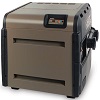
Hayward H400FDN
- Best overall
Type of filter:
Natural gas- 400,000 BTUs
Pool type:
In-ground poolsWarranty:
1 yearPrice:
$$$$
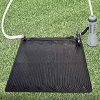
Intex 28685
- Best for above ground pools
Type of filter:
Solar- N/A
Pool type:
8,000 gallons or less above ground poolsWarranty:
30 daysPrice:
$
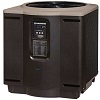
Hayward HP50TA
- Best for above ground pools
Type of filter:
Electric heat pump- 50,000 BTUs
Pool type:
13,000 gallons or les above ground poolsWarranty:
1 yearPrice:
$$$$
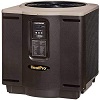
Hayward W3HP21404T
- Best electric pool heater
Type of filter:
Electric heat pump- 140,000 BTUs
Pool type:
In-ground pools and large above-ground poolsWarranty:
1 yearPrice:
$$$$
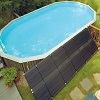
SmartPool S240U
- Best solar pool heater
Type of filter:
Solar- N/A
Pool type:
In-ground and above-ground poolsWarranty:
Not listedPrice:
$$
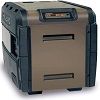
Hayward W3H200FDP
- Best propane pool heater
Type of filter:
Propane- 200,000 BTUs
Pool type:
In-ground poolsWarranty:
1 yearPrice:
$$$
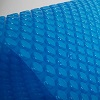
Blue Wave Solar Blanket
- Cheapest pool heater
Type of filter:
Solar blanket- N/A
Pool type:
In-ground and above ground poolsWarranty:
5 years (prorated)Price:
$
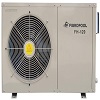
FibroPool FH120
- Cheapest electric pool heater
Type of filter:
Electric heat pump- 20,000 BTUs
Pool type:
Above ground pools up to 7,500 gallonsWarranty:
Not listedPrice:
$$
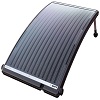
GAME 4721-BB
- Best solar heater for in-ground pools
Type of filter:
Solar- N/A
Pool type:
In-ground and above ground poolsWarranty:
4 years (prorated)Price:
$$$
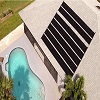
Hayward W3HP21404T
- Best electric pool heater
Type of filter:
Electric heat pump- 140,000 BTUs
Pool type:
In-ground pools and large above-ground poolsWarranty:
1 yearPrice:
$$$$
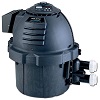
Sta-Rite SR333LP
- Most efficient pool heater
Type of filter:
Propane- 333,000 BTUs
Pool type:
In-ground pools up to 20,000 gallonsWarranty:
2 yearsPrice:
$$$$
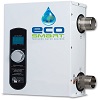
Ecosmart 27
- Best kiddie pool heater
Type of filter:
Electric- N/A
Pool type:
Above ground and in-ground poolsWarranty:
2 yearsPrice:
$$
Best Pool Heaters 2022: Reviews
The Hayward H400FDN natural gas pool heater is the best choice for most pool owners. The 400,000 model is powerful enough to heat large pools in a matter of hours.
You can run it at any time of the day or year regardless of ambient weather and temperature. And with the simple control panel, it’s easy to dial in the precise pool temperature you want.
Pros
- Ideal for large in-ground pools as well as spas.
- Ideal for all-year-round use.
- Heats the pool quickly.
- Cupro-nickel heat exchanger increases durability, especially in saltwater pools.
- Low NOx emissions – environmentally-friendly.
- Low noise levels.
Cons
- Pricey.
- Requires professional installation.
- Reliability issues, requiring frequent repairs.
Our Review
Best Features
1. 400,000 BTUs
The 400,000 BTU Hayward H400FDN is one of the most powerful pool heaters in the Hayward H series. This makes it a great choice for most in-ground pools.
If you have a standard 15’ by 30’ pool (about 15,000 gallons), the Hayward H400FDN pool heater will raise water temperature by about 2.7 degrees every hour.
For a large 20’ to 30’ pool, the rise will be about 2 degrees per hour.
In a few hours, your pool should be feeling comfortably warm. This is much faster than the multiple days it would take for a heat pump or solar heater to raise the pool temperature.
2. Cupro-Nickel Heat Exchanger and Polymer Head
One of the biggest enemies of pool heaters is corrosion from the water passing through the heat exchanger. Corrosion is an even bigger problem in saltwater pools.
To increase durability, the Hayward H400FDN uses a Cupro-nickel (also called copper-nickel), heat exchanger. Unlike normal copper heat exchangers, Cupro-nickel is more resistant to corrosion caused by salt and varying pH levels.
Another design feature that increases durability is the polymer head that provides improved protection against water erosion while increasing water flow.
For power, the Pump plugs into a standard GFCI outlet. The plug itself has built-in GFCI protection.
Once the Pump is installed, the control lever can be set to one of six positions: backwash, rinse, filter, recirculate, drain, and close.
3. Environmentally Friendly
The Hayward H400FDN meets low NOx emissions standards set in California and Texas.
Issues & Limitations
The Hayward H400FDN seems to have a few reliability issues. The heat exchanger, despite having an improved cupro-nickel construction, breaks down often.
You have to be extra-strict, maintaining your pool’s chemical and pH balance to avoid damaging the heat exchanger.
Luckily, the manufacturer is helpful and quick to solve problems. The 1-year warranty will cover any repairs and replacements you need.
Note that you’ll likely need to have a professional install the pool heater, which adds to your overall cost. Improper DIY installation can void the warranty.
The Bottom Line
Though pricey, the Hayward H400FDN natural gas pool heater is one of the best ways to keep your pool warm in cold weather.
It works in any climate and heats your pool much faster than other types of pool heaters.
#2
BEST SOLAR HEATER FOR ABOVE GROUND POOLS: Intex 28685 Solar Heater Mat
BEST SOLAR HEATER FOR ABOVE GROUND POOLS
Solar pool heaters are great if you want to save costs by buying and running a pool heater. Not only are solar pool heaters cheaper, but they are also essentially free to operate.
The Intex 28685 solar heater mat is designed to keep above ground pools warm. For best results, consider buying two or three of the mats and connecting them.
Pros
- Easy to set up.
- Low cost.
- Cheaper to operate compared to gas and electric pool heaters.
Cons
- It doesn’t last long – the Intex mat is more of a one-season pool heater.
- Heats the water only on sunny days.
- Takes several days to warm the water.
Our Review
Best Features
1. Free Solar Energy
Unlike electric and gas pool heaters, operating the Intex solar mat doesn’t directly cost you any money. The mat collects free heat energy from the sun and uses it to warm the water.
Of course, it’s not completely free. Since the Intex solar heater mat can only warm the water when the pool pump is on, you’ll need to run the pump for longer, which increases electricity usage.
But the overall operation costs are much lower compared to other types of pool heaters.
2. Easy to Set Up
You can set up the Intex solar heater mat yourself, which saves you more money.
All you need to do is hook up the mat to the filter pump and your pool’s return line. All parts and fittings are included.
Note that the Intex solar heater mat is designed for 8,000 gallons or less above ground pools. Furthermore, the filter pump should be no more than 1/3 HP and with a flow rate of 2,500gph or lower.
A too-powerful pump with a high flow rate can burst the solar heater mat.
The mat measures 1m by 1m. A single one takes several days to warm your pools significantly. For faster warming, order several mats and join them.
Tip: We highly recommend using a solar blanket or pool cover at night to prevent heat loss. Without it, your pool will take forever to feel warm. Read our reviews of the best solar pool covers.
Issues & Limitations
Solar heaters take days to warm up a pool. That’s a limitation inherent in all solar heaters, not just the Intex 28685 solar heater mat.
The biggest problem that is unique to the Intex mat is its short-lived lifespan, which is not surprising given how cheap it is.
The seams come apart easily, and it has a tendency to burst after some time. If you don’t keep an eye on it, it could drain a lot of water from your pool.
The Intex solar heater mat usually lasts one swimming season.
The Bottom Line
The Intex 28685 solar heater mat is a good choice if you are looking for an affordable solar pool heater to keep your above ground swimming pool warm.
For best results, pair it with a solar blanket or cover.
#3
BEST ABOVE GROUND POOL HEATER: Hayward HP50TA 50,000 BTU Heat Pro Heat Pump
BEST ABOVE GROUND POOL HEATER
The Intex Solar Heater Mat is cheap, but it’s slow. If you want to heat your above ground pool in an hour, rather than days, we recommend the 50,000-BTU Hayward HP50TA HeatPro heat pump.
Another advantage of the HeatPro’s over the Intex solar mat is that it extends your swimming pool season for longer. As long as the ambient temperature stays above 50F, the HeatPro will warm your pool even if it’s not sunny.
Pros
- Heats most above ground pools in a matter of hours.
- Easy temperature selection.
- The Titanium heat exchanger prevents corrosion – ideal for saltwater pools.
- Works quietly.
- Huge energy savings compared to a natural gas or electric (resistance) pool heater.
- Extends swimming season for longer than a solar pool heater.
Cons
- Pricey.
- May require professional installation.
Our Review
Best Features
1. Low Operation Costs
If you want a fast-warming pool heater that is also cheap to run, a heat pump is the best option.
The Hayward HP50TA HeatPro does not generate heat, which would be expensive. Instead, it takes heat from the air around it and transfers it to the water. This uses very little electricity.
Customers say they saw a little increase in their electricity bill. The heat pump costs about 16 cents an hour to keep a small above ground pool warm.
2. Titanium Heat Exchanger and Ultra Gold Evaporator
Because copper corrodes easily when exposed to water, especially saltwater, the Hayward HP50TA HeatPro uses a titanium heat exchanger.
Titanium is a durable and corrosion-resistant material with excellent heat conductivity.
The titanium heat exchanger makes the Hayward HP50TA HeatPro ideal for saltwater pools as well as normal chlorine pools.
An ‘Ultra Gold’ evaporator also keeps out corrosion and ensures the heat pump lasts for long without major problems.
3. Quiet Operation
You’ll notice the HeatPro heat pump is running if you get close to it, unlike other heat pumps that you can hear right from the house.
The quiet operation is mostly thanks to an acoustic compressor cover that blocks most of the noise from the unit.
4. Warms Pool in Hours
One big advantage of a heat pump over solar pool heaters is that you can set a specific temperature, and the heat pump will maintain it.
Once you select your preferred temperature, the HeatPro works until the water achieves that temperature. It’ll then come on occasionally to maintain that temperature.
Depending on the temperature you’ve set and the size of your pool, the HeatPro can achieve it in less than 12 hours. It’ll then run for just 2-3 hours a day to keep the pool warm.
Note: For best results, only connect the HeatPro heat pump to a 13,000-gallon or less above ground pool.
Issues & Limitations
The main limitation of the Hayward HP50TA HeatPro is one that is common to all pool heat pumps. When the temperatures drop to below 50-55 degrees, it’ll no longer warm your pool.
That’s because there’s isn’t enough heat in the air to transfer to the water.
If you live in a place with particularly cold winters, the Hayward HP50TA HeatPro may not be the best option for you.
The other issue is the cost, at least the initial cost. The Hayward HP50TA HeatPro is expensive compared to a solar pool heater.
But most pool owners think it’s worth it. It warms the pool quickly and reliably and does not cost much to run.
The Bottom Line
The Hayward HP50TA HeatPro heat pump is the best choice for above ground pool owners looking for an affordable pool heater that warms the water quickly and doesn’t cost much to operate.
If you are looking for an electric pool heater that can warm your in-ground pool or a large above ground pool, we recommend the Hayward W3HP21404T Pool Heat Pump.
With 140,000 BTUs of heating capacity, it’ll get your pool pleasantly warm in a couple of days.
Pros
- Low operation costs.
- Works quietly.
- Warms water much quicker than a solar heater.
- Corrosion-resistant design.
Cons
- Expensive.
- Short warranty, considering the price.
- Requires professional installation.
Our Review
Best Features
1. 140,000 BTUs
At 140,000 BTUs, the Hayward W3HP21404T heat pump is not quite as powerful as some natural gas pool heaters.
But it’s powerful enough to warm a standard in-ground pool in 2-4 days depending on the temperature you set and the weather.
Once it achieves the set temperature, it only runs for a few hours a day to maintain it.
2. Corrosion-resistant Design
The Hayward W3HP21404T has two features to protect it from corrosion.
The first is a titanium heat exchanger. Titanium can withstand a watery environment, even one with high salt levels. If you have a salt-water pool, the Hayward W3HP21404T is safe to install.
The second feature is the Ultra Gold evaporator fin, which is also resistant to corrosion.
3. Low Noise Levels
Special blade design and an acoustic cover for the compressor reduce the amount of noise the Hayward W3HP21404T heat pump produces.
You have to walk right up to it to know it’s working.
Issues & Limitations
The Hayward W3HP21404T heat pump is expensive. You can get a gas pool heater with higher BTUs for less money.
The upside is that the Hayward W3HP21404T is much cheaper to run. In the long run, it’s actually the more affordable option.
For the price, the warranty should be longer than the one-year coverage that Hayward offers.
The Bottom Line
The Hayward W3HP21404T heat pump is a good choice for anyone looking for good quality and durable electric pool heater.
Heating your pool with a solar heater takes longer and depends on sunlight availability.
However, it saves you money in operating costs as well as the initial cost (solar pool heaters are cheaper than electric and gas heaters).
The SmartPool S240U Universal Sun Heater warms both in-ground and above ground pools.
The two 20’ panels included in the package are enough for an above ground pool. If you have an in-ground pool, order several extra panels to heat the higher water volume.
Pros
- Minimal operation costs.
- Cheaper than other types of pool heaters.
- DIY setup.
- Easy to expand with extra panels for an in-ground pool.
- Extends swimming season by 2-3 months.
Cons
- Takes days to raise pool temperature.
- Connectors don’t work well with Teflon tape.
Our Review
Best Features
1. Low Operation Costs
If you are worried about your gas bill or electricity bill going up, a solar pool heater is the best option.
Other than the slightly higher costs of running the pool pump for longer, the SmartPool S240U solar heater is essentially free to run.
As long as there’s some sunlight, it’ll warm your pool.
The solar heater increases pool temperature by about 6-10 degrees every day. On average, it takes about 3 days to get the pool to a nice warm temperature.
To keep the pool warm, use a solar blanket or pool cover to prevent nocturnal heat loss.
2. Easy Installation
Solar pool heaters are generally easy to install, and the SmartPool S240U is no different. No need to call a pro – it’s a roughly 2-hour DIY job.
The most time-consuming part is propping the panels up to receive maximum sunlight. You’ll probably need to create a wooden platform that angles the panel towards the sun.
An easier alternative is to lean the panels against a fence. You can also put them up on the roof.
Note: The SmartPool S240U kit doesn’t include a bypass system. You may want to make one prevent water from going to the solar heater when the pool gets too warm.
Issues & Limitations
The most common issue customers have brought up is about the threading. It doesn’t seal properly when you apply the Teflon tape.
Some customers recommend using pipe dope instead.
Don’t expect your pool to get warm on the first day. It takes at least 3 days for the solar heater to raise pool temperature by 20-30 degrees.
If you want a pool heater that can quickly warm the pool in a few hours, this is not it. Get a gas pool heater instead.
The Bottom Line
The SmartPool S240U solar heater is a great choice for above ground and in-ground pool owners looking for good quality and long-lasting solar pool heater.
#6
BEST PROPANE POOL HEATER: Hayward W3H200FDP Universal H-Series Propane Pool and Spa Heater
BEST PROPANE POOL HEATER
If you don’t have access to natural gas in your home but still want the benefits of a gas pool heater, we recommend a propane pool heater.
The Hayward W3H200FDP is one of the best propane pool heaters in the market. At 200,000 BTUs, it’s perfect for most in-ground swimming pools.
If you have a larger pool or want your pool to heat faster, select the 250,000 BTU or 400,000 BTU heaters.
Pros
- Heats the pool in hours.
- The cupro-nickel heat exchanger provides corrosion protection.
- Energy-saving hydraulic design – reduced pool pump run time.
- Low NOx emissions.
- Easy to use control pad.
- Cheaper than most heat pumps with similar heating capacity.
Cons
- Requires professional installation.
- No protective cover for the control panel.
- More expensive to run compared to electric, natural gas, and solar heaters.
Our Review
Best Features
1. Cupro-nickel Heat Exchanger
Cupro-nickel heat exchangers have become a popular alternative to traditional copper heat exchangers.
Cupro-nickel, a material consisting of copper and nickel, has much better corrosion resistance while maintaining the heat conductivity of copper.
The cupro-nickel heat exchanger extends the life of the entire pool heater, reduces maintenance costs, and makes the Hayward W3H200FDP ideal for use in saltwater pools.
2. 200,000 BTUs
200,000 BTUs are adequate for most swimming pools. If you have a 15’ by 30’ swimming pool, the Hayward W3H200FDP will raise water temperature by about 1.5-2 degrees every hour.
It takes about 12-20 hours to reach a comfortable pool temperature. This is much faster than the multiple days it takes with a solar heater or heat pump.
If you have a larger pool, we recommend the 250,000 BTUs or 400,000 BTUs Hayward propane pool heaters.
3. Digital Control Panel
It’s easy to set a target temperature using the digital control panel.
The only problem is that the control panel is uncovered, leaving it exposed to water and dust.
4. Polymer Header
A specially designed polymer header improves hydraulic performance, which enhances water flow and circulation. This reduces pump run time, helping lower your pool costs.
The polymer construction of the header also protects against water erosion and corrosion.
Issues & Limitations
Several customers have reported issues with their unit’s control panel. The buttons get stuck after some time, likely due to exposure to water and dust particles.
Hayward should include a cover for the control panel.
We should also mention that the Hayward W3H200FDP is more expensive to run compared to natural gas, electric, or solar pool heater.
In most places, propane costs more than natural gas.
You can use the Hayward W3H200FDP with natural gas to lower your costs, but you’ll need a conversion kit.
The Bottom Line
The Hayward W3H200FDP is a great choice for pool owners without access to natural gas. The Hayward W3H200FDP works just as well as a natural gas heater but uses propane.
A solar blanket is the best pool-heating solution if you are on a tight budget. It’s even cheaper than buying a solar pool heater.
The Blue Wave solar blanket is available in a wide range of sizes for both above ground and in-ground pools. Lay it across your pool to warm the pool during the day and prevent heat loss at night.
Note, however, that the Blue Wave solar blanket does not last long. You’ll need to replace it after about two swimming seasons.
Pros
- A cheap way to warm your pool.
- Easy to set up.
Cons
- It doesn’t last long, despite the 5-year warranty.
- The warranty is prorated. Replacing a damaged solar blanket is almost as expensive as buying a new one.
- Warms the pool slower than other pool heaters. Also, the temperature rise is much less than that of other types of pool heaters.
Our Review
Best Features
1. Truly Free Pool Heating
A solar pool heater is much cheaper to operate compared to an electric or gas heater. But it’s not completely free since it depends on your pool pump to work. Your pump will work harder and use a little more electricity than usual.
Beyond the initial purchase cost, the Blue Wave solar blanket is truly free to operate. It doesn’t require an electrical connection, nor does it connect to your pool pump.
Just lay it on the pool surface and enjoy free pool heating from the sun.
Bubbles on the blanket trap the sun’s heat and transfer it to the water. At night, the air within the bubbles acts as an insulator, preventing heat from escaping out of the pool.
The blanket also prevents evaporation, the biggest cause of heat loss from your pool.
2. Extends Swimming Season
Temper your expectations in regards to how warm your pool will get. Unlike a heat pump or gas heater that can raise water temperature by as much as 30 degrees, the Blue Wave solar blanket raises it by 10-15 degrees.
Depending on your location and the weather, the change can be as modest as 5 degrees after several days.
But it makes a big difference.
Most pool owners say the Blue Wave solar blanket allows them to open their pool a month before the normal swimming season and keep swimming for a month after the season ends.
3. Easy to set up
The Blue Wave solar blanket is available in multiple sizes ranging from a 12 by 20 feet blanket to a 30 by 50 feet blanket for extra-large in-ground pools.
If you don’t get a size corresponding to your swimming pool dimensions, select a larger size, then cut it to fit your pool.
Cutting the solar blanket will not damage it.
The blanket is super easy to set up. It takes a couple of minutes to lay it across the pool and even less time to remove it.
You can leave the blanket on the pool all the time and quickly roll it up when you need to take a swim.
Issues & Limitations
As we mentioned, don’t expect the Blue Wave solar blanket to work as well as a solar pool heater or a heat pump.
It warms the pool much slower and increases the water temperature by 5-15 degrees, depending on how sunny it gets.
Another issue with the Blue Wave solar blanket is durability. The manufacturer offers a 5-year warranty, but customers say it doesn’t last beyond two years.
After a couple of seasons, the bubbles will begin popping, and the blanket weakens to the point that it tears when you move it.
You can claim a new blanket under the 5-year prorated warranty, but you have to pay a certain percentage of the price of the blanket.
The Bottom Line
The Blue Wave 12-mil solar blanket is a great choice for above ground and in-ground pool owners looking for a cheap way to warm their swimming pool and extend the swimming season.
#8
CHEAPEST ELECTRIC POOL HEATER: FibroPool FH120 Above Ground Swimming Pool Heat Pump
CHEAPEST ELECTRIC POOL HEATER
Electric pool heaters, even smaller ones, usually start at $2,000. The FibroPool FH120 heat pump is one of the cheapest electric pool heaters you’ll find online.
Its 20,000-BTU output is on the lower side, but it’s perfect for above ground pools.
Pros
- Affordable.
- Durable and weatherproof steel chassis.
- The Titanium heat exchanger prevents corrosion damage.
- Movable digital control panel.
Cons
- Only ideal for small above ground swimming pools.
Our Review
Best Features
1. 20,000 BTUs
20K BTUs doesn’t sound like much compared to the 200,000 and 400,000 BTU heat pumps we have reviewed.
But it works. It’ll take longer to heat your above ground swimming pool, but once it gets warm, the heat pump maintains it at that temperature with ease.
Most pool owners noticed a temperature rise of 15-20 degrees in about three days.
To keep your pool warm, we highly recommend getting a pool cover. It will prevent evaporation (which causes heat loss) when the pool is not in use.
Note that the FibroPool FH120 is designed only for above ground pools with a capacity of 7,500 gallons or less.
It works best in 12 by 24 feet above ground pools. You can certainly use it in a larger above ground pool, but it will take longer to warm the water, and the temperature rise will be smaller.
2. Titanium Heat Exchanger
Thanks to the titanium heat exchanger, the FibroPool FH120 heat pump is ideal for saltwater above ground pools.
Titanium is durable and highly resistant to corrosion.
3. DIY Installation
Heat pumps are expensive enough without adding the cost of hiring a pro to install it.
Thankfully, the FibroPool FH120 is fit for DIY installation. Don’t worry, you don’t have to do any hardwiring or plumbing.
The heat pump plugs into a standard 120V 3-prong outlet using an 8-foot cable. Similar to other appliances that come into contact with water, you must use a GFCI protected outlet.
4. Movable Display and Control Panel
This is a unique one. Most heat pumps have the control panel and display fixed on the main unit. You have to walk right up to the heat pump to adjust the temperature or turn it off.
The FibroPool FH120 does things differently and more conveniently. Using an extension (sold separately), you can place the control panel where it’s most convenient.
If you want, you can control the heat pump from inside the house.
Issues & Limitations
The FibroPool FH120’s main limitation is its relatively low heating capacity.
If you have an in-ground swimming pool or a large above ground pool (more than 8,000 gallons), the FibroPool FH120 is not for you.
The Bottom Line
The FibroPool FH120 heat pump is a great choice for anyone looking for a pocket-friendly and easy to install electric pool heater for their small above ground swimming pool.
#9
BEST SOLAR HEATER FOR IN-GROUND POOLS: GAME 4721 SolarPRO Curve Solar
BEST SOLAR HEATER FOR IN-GROUND POOLS
Heating in-ground pools with gas or electric heaters are expensive. A solar heater won’t warm your pool as quickly, but it’ll cost you much less money.
The GAME 4721-BB SolarPRO Curve is a great choice for in-ground pool owners who want to extend their swimming season without spending buckets of money on gas or electricity bills.
Note, however, that you’ll need to order several panels to achieve a significant temperature increase.
Pros
- One of the cheapest ways to warm an in-ground pool.
- Easy to set up – DIY installation.
- Curved shape maximizes solar exposure.
- Clear cover traps heat for improved water heating performance.
- Adjustable legs for easy positioning on the ground – no need to build a platform or install it on the roof.
Cons
- You’ll need several panels for an in-ground pool.
- Slow temperature increases.
- Fair construction quality – be careful when handling it.
Our Review
Best Features
1. Curved Design
Unlike other solar pool heaters that use flat panels, the SolarPRO panel is curved.
This design maximizes exposure to the sun, increasing the amount of heat the panel captures.
The panel works best in direct sunlight, but will also capture some heat when the sky is cloudy, or the panel is partially shaded.
2. Easy Ground Installation
Don’t worry about setting up the SolarPRO panel on the roof or building a special platform for it. It comes with adjustable legs that let you set it up anywhere on the ground where there’s plenty of sunlight.
The hoses included with the heater are short, so you may need to buy more.
3. Ideal for Above Ground and In-ground Pools
Most of the people buying the SolarPRO Curve own an above ground pool. You can also use it to heat an in-ground pool of any size.
However, you’ll need to buy several panels and connect them to increase heating capacity.
For an above ground pool, one or two panels are enough. If you own an in-ground pool, that number will be higher.
Some pool experts recommend using solar panels that equal at least 50% of the pool’s surface area.
The department of Energy recommends matching the surface area of the solar panels to that of the pool (100%) if you want to enjoy swimming all year round. 60-70% coverage gives you a 6-8 months swimming season.
Based on the dimensions provided by the manufacturer, a single curved solar panel has a surface area of about 8.5 square feet.
For a 15 by 30 feet pool, 50% coverage (450/2 = 225 sq. ft.) would involve buying about 26 of these panels.
Obviously, that’s expensive, and you likely don’t have the space for all those panels.
Luckily, several in-ground pool owners have found that 4-6 panels are enough to get a 3-5 degree rise in temperature. That’s a big enough difference to keep your pool swimmable for a month before and after the normal swimming season.
Issues & Limitations
The biggest limitation of the SolarPRO curved pool heater is that you need many of them to see a big temperature rise.
If you want a 15-30 degree rise in temperature, either get ready to buy at least two dozen panels or switch to a gas heater or heat pump.
Another issue is the build quality. There are several complaints about leaks and broken legs. Handle the heater with care and don’t use a pool pump more powerful than 1.5 HP without a bypass kit.
The Bottom Line
The GAME 4721-BB SolarPRO Curve is a great choice for in-ground pool owners looking for a good quality solar pool heater to warm their pools by a few degrees.
#10
BEST ROOFTOP SOLAR POOL HEATER: SmartPool S601P SunHeater Solar Heating System
BEST ROOFTOP SOLAR POOL HEATER
If having several solar heater panels on the ground in your backyard will clutter your landscaping, get a solar roof heater instead.
We recommend the SmartPool S601P SunHeater Solar Heating System.
The SmartPool S601P will raise your pool temperature by about 6-20 degrees every day, depending on sun conditions and how many panels you order. For in-ground pools, the pack of 4 is ideal.
Pros
- Raises pool temperature significantly.
- Rooftop installation maximizes heat capture.
- Low operation costs.
Cons
- Panels take time to install on the roof.
- Installation kit not included.
- In-ground pools require multiple panels, which drive up the final cost.
Our Review
Best Features
1. Rooftop Installation
The SmartPool S601P system is designed for rooftop installation. You can certainly place them on a platform or even lean them against the fence, but they won’t heat your pool as well.
Installing them on the roof allows maximum heat capture, which heats your pool quickly and more efficiently.
Many pool owners report a temperature increase of 10-20 degrees after a few days. In very hot weather, there’s actually a danger that the pool can get uncomfortably hot.
Some pool owners installed sensors and automated actuators to automatically regulate water flow to the solar heater based on the pool temperature.
2. Multiple Pack Options
A single solar heater panel isn’t going to cut it unless you have a small above ground pool.
For in-ground pools, you’ll need 4-8 panels depending on the size of your pool and how warm you want it to get.
Start with the 4-pack and see how well it does. If it doesn’t warm the pool as much as you’d like, order a couple more panels.
Note that each panel measures 20 by 4 feet. That’s an 80 sq. Ft. surface area. Four panels will provide a heating area of 320 square feet, which should be enough for standard 15’ by 30’ in-ground pools.
3. Low Operation Costs
Even though you are getting free energy from the sun, the SmartPool S601P is not completely free to operate. You’ll need to run your pool pump for longer, which raises electricity usage.
But compared to a heat pump or a gas heater, the SmartPool S601P is way cheaper to operate.
Issues & Limitations
We highly recommend getting a pro to install the system for you. It requires some technical expertise to determine the right location to install it on your roof. You’ll also need help plumbing the system.
If you think you can install it yourself, set aside a full day.
Note that the SmartPool S601P doesn’t come with an installation kit. You have to buy it separately or buy your own parts and fittings from the local Home Depot.
One issue several buyers have mentioned is the tendency for the system to leak. This is likely caused by too much pressure from your pump.
Install the system in such a way that not all the water from the pump goes through the solar heater. Some should go directly back into the pool and some through the heater.
You’ll need valves and a bypass system to set this up. We really recommend getting a pro to do all this stuff.
The Bottom Line
The SmartPool S601P SunHeater Solar Heating System is a great choice for in-ground pool owners looking for a good quality rooftop solar heating system.
#11
MOST EFFICIENT POOL HEATER: Sta-Rite SR333LP Max-E-Therm Propane Gas Pool and Spa Heater
MOST EFFICIENT POOL HEATER
The Sta-Rite SR333LP Max-E-Therm Propane Pool heater has an efficiency rating of 84%, making it one of the most efficient pool heaters.
The high efficiency translates into better and faster pool heating as well as lower gas bills for you.
Pros
- Efficient – save gas and heats pool faster.
- Rustproof and durable housing.
- Unique retro design.
- Easy to use control panel.
Cons
- Uses copper (rather than Cupro-nickel) heat exchanger, which is more susceptible to corrosion.
- Requires professional installation.
Our Review
Best Features
1. 84% Efficiency
The Sta-Rite SR333LP Max-E-Therm heater has one of the highest efficiency ratings among gas pool heaters.
The secret is the material they use, or rather don’t use, in the heat exchanger. Most propane and natural gas heaters use Cupro-nickel heat exchangers. While Cupro-nickel provides better protection against corrosion, it reduces heating efficiency.
A pure copper heat exchanger like the one used in the Sta-Rite SR333LP system has better heat conduction and wastes less heat.
The Sta-Rite SR333LP heater warms your pool faster while using less gas.
2. 333,000 BTUs
The Sta-Rite SR333LP boasts 333,000 BTUs of heating capacity. This is enough to warm a 700 sq. Ft. pool (about 20,000 gallons) by 2-4 degrees per hour.
The Sta-Rite SR333LP heater is a good choice if you want a system that can quickly heat your pool in a few hours.
Note that the Sta-Rite SR333LP pool heater uses propane though you can convert it to use natural gas.
3. LED Control Panel
The easy to use control panel features an LED display, dual thermostat control, a temperature safety lockout, and other settings.
Issues & Limitations
We are concerned about the copper heat exchanger corroding, especially if you plan to install it in a saltwater pool.
But the manufacturer says it is safe to use in any type of pool, including one with a saltwater system.
If any damage happens, that’s not your fault, you’ll be covered by the 2-year warranty.
Something else you should know is that the Sta-Rite SR333LP requires professional installation, something you have to budget for. If you install it yourself, the warranty will be void.
The Bottom Line
The Sta-Rite SR333LP Max-E-Therm propane pool heater is a good choice for in-ground pool owners looking for a fast-heating and gas-saving pool heater.
Unlike heat pumps, the Ecosmart electric tankless pool heater uses electrical resistance to heat water, similar to an instant shower heater or an electric kettle.
Because it’s generating heat directly (rather than ‘borrowing’ heat from the air like a heat pump), it uses much more electricity. Ecosmart’s power consumption is 27kW.
That’s why we recommend the Ecosmart heater for small kiddie pools. You get a quick temperature rise without getting a big hit on your electricity bill.
But if you don’t mind your monthly bill going up by $100 or more, you can use Ecosmart to heat a much larger pool, even an in-ground pool.
Pros
- Heats pool quickly.
- You can select a precise temperature using the built-in thermostat.
- Ideal for all climates and seasons.
- Cheaper than heat pumps and gas heaters (but the operation costs are higher).
Cons
- It uses a lot of electricity.
- Requires professional installation.
Our Review
Best Features
1. Fast-Heating Electric Pool Heater
For most pool owners looking for an electric pool heater, we often recommend a heat pump. Even though it can take 2-4 days to get a significant temperature increase, it can warm your pool by as much as 20-30 degrees.
But if you want your pool to warm up in a few hours and don’t want a gas heater, a conventional electric heater like Ecosmart is the best choice.
For a Kiddie pool with 11,000 gallons of water, the Ecosmart 27 will take ten hours to raise the temperature by 10 degrees.
For an above ground pool with 15,000 gallons, it’ll take 20 hours to raise pool temperature by 15 degrees.
For an in-ground pool, it’ll take about two days to get the same temperature rise.
Once the heater achieves the set pool temperature, it uses less power to maintain it. We highly recommend using a pool cover or solar blanket at night to reduce heat loss. It’ll lower the amount of power the Ecosmart heater uses.
2. Digital Thermostat
You can set a precise temperature using the built-in thermostat. Once the pool reaches that temperature, the thermostat will maintain it in that setting.
Issues & Limitations
Expect your electricity bill to go up.
Electrical resistance heating is the most expensive way to warm up your pool. The larger your swimming pool, the most expensive it will be to heat.
Also, note that you’ll need to have a professional install the heater for you. Actually, two professionals; one for the plumbing and another for the electrical stuff.
Do not attempt to install the heater yourself. It’s not a simple plug-in system.
The Bottom Line
The Ecosmart electric tankless pool heater is a great choice for anyone looking for a fast-heating electric pool heater. Because of the high electricity usage, we recommend it for Kiddie pools and small above ground pools.
Pool Heater Replacement Parts and Accessories
Here are some common pool heater replacement parts and accessories.
If you need to upgrade your above ground pool pump to something more powerful, the Blue Wave 1.5HP pool pump is a great choice.
It allows you to connect a pool heater without reducing water flow in and out of the pool.
The Blue Wave pump has a rust-resistant polymer construction, a self-priming design, and dual ports for vertical and horizontal discharge.
A thermistor replacement for the Sta-Rite Max-E-Therm pool heater as well as Pentair MasterTemp heaters.
A control board replacement for Pentair MasterTemp NA and LP Series pool heaters. Also compatible with the Sta-Rite Max-E-Therm heater.
An external programmable timer for your pool pump. Use it to regulate when the pool heater starts and stops warming the pool.
For instance, if you have a solar pool heater, you can set the timer to switch on the pump for 8 hours during the day. During this period, when it’s sunny, the solar heater will be at work, warming the pool.
Types of Pool Heaters
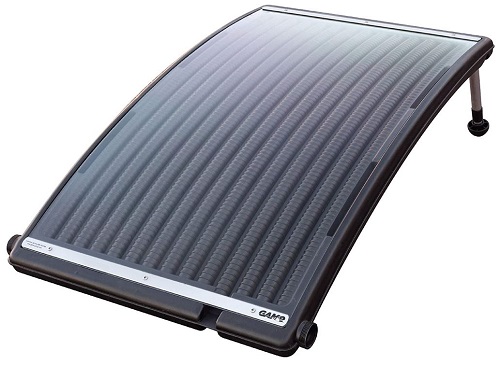
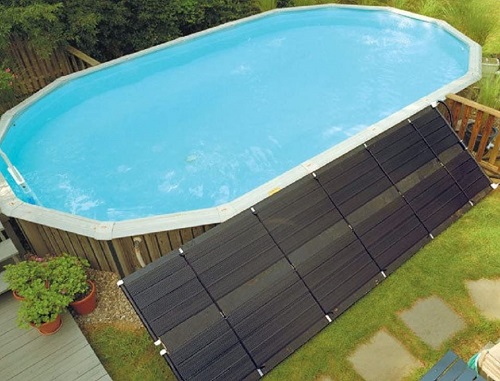
Here are the most common types of pool heaters.
Solar Pool Heaters
A solar pool heater is one of the cheapest ways to heat your pool. It captures heat energy from the sun and transfers it to the water.
The main disadvantage of solar pool heaters is that they warm the pool slowly over several days. It can take as many as five days to get a 5-10 degree temperature difference in your pool.
Electric Pool Heat Pump
Heat pumps are popular among pool owners. They provide faster and better heating than solar heaters but don’t cost as much to run as electric or gas heaters.
A heat pump works by transferring heat from ambient air to the pool. The air temperature must be above 45-50 degrees for it to work. If you live in an area that gets very cold winters below 50F, a heat pump is not for you.
Because a heat pump does not generate heat but only transfers it, it costs less to operate compared to a gas heater or an electric heater.
Gas Heaters
There are two types of gas heaters: natural gas and propane heaters.
Gas heaters heat the pool the fastest, with an average temperature increase of about 2 degrees per hour. You can have a sufficiently warm pool in a few hours.
If you need to warm the pool only occasionally, such as during the weekend, a gas heater is a good option. It can be expensive to operate, though, especially if you plan to use it to keep your pool warm all the time.
Note: Because propane costs more than natural gas in most places, a propane gas pool heater costs more to run.
Electric Heaters
Technically, heat pumps are electric heaters since they use electricity to transfer heat. However, the term ‘electric heaters’ typically refers to pool heaters that use electric resistance heating to warm the pool.
Basically, the same way an electric kettle heats water is the same way an electric heater warms the pool. A resistor element turns incoming electricity into heat.
Electric heaters warm the pool much faster than a heat pump or a solar heater, though not as quickly as a gas heater. Heating a large in-ground pool takes 1-3 days.
But they are expensive to run. If you are heating an in-ground pool, an electric heater could easily double your electricity bill.
Because of the high operation costs, electric heaters are ideal for small above ground pools.
DIY Pool Heater
If you want to go the DIY route, there’s a wide range of pool heaters you can create using common materials such as wood or a black hose. Here are some ideas.
- Firewood pool heater. Ideal if you have plenty of firewood lying around. Here’s a YouTube video showing the process.
- Hose pool heater. All you need is a long black hose in loops on a base such as a piece of plywood. The hose gets hot and heats water passing through the pool. This is essentially a DIY solar heater. Here is an instructional guide.
- Charcoal pool heater. Works the same way as a firewood pool heater, but using charcoal.
Buying Guide: How To Select The Right Pool Heater
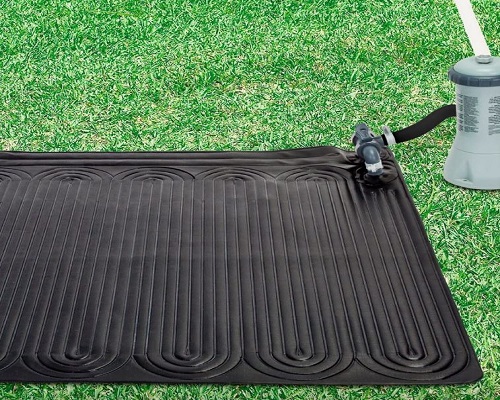
Here’s what to consider when choosing a pool heater.
Choose the Right Size
If you are shopping for a heat pump or a gas pool heater, the number of BTUs will tell you the size and power of the heater. The higher the BTUs, the faster the heater will warm your pool.
For an above ground pool, a heater between 55,000 and 130,000 BTUs is enough to warm the pool in a few hours or a couple of days. For an in-ground pool, the ideal heating power is between 100,000 and 400,000 BTUs.
A 300,000 BTU pool heater will raise a 15′ by 30′ pool temperature by about 2 degrees per hour. A 400,000 BTU heater can achieve a 2.7-degree rise per hour. This translates to a 24 degree and 32-degree temperature rise in 12 hours.
If you are buying a solar heater, the figure to focus on is surface area. If you live in a sunny area, your solar heater should have a surface area of 50-70% of the surface area of the pool.
If you live in a colder area, that number goes up to 100%.
So, if you have a 15′ by 30′ pool (450 square feet), three 80 sq. Ft. panels will keep your pool warm if you live in Florida, five if you live in a colder climate like Maine.
Speed of Heating
The heating speed is closely correlated to the size of the heater.
For the same pool size, a 400,000 BTU gas heater will heat your pool faster than a 100,000 BTU heater. Similarly, 400 square feet of solar heating panels will achieve a faster temperature rise than 200 sq. Ft. solar heating system.
The type of heater matters too.
Gas heaters are the fastest. You can raise your pool temperature by 20-30 degrees in 8-24 hours, depending on the heating power of the heater and the size of your pool.
Heat pumps are the second-fastest. Depending on the BTUs, a heat pump will raise pool temperature by 20-30 degrees in 1-4 days.
Solar heaters are the slowest. It can take five days or more to get a 10-15 degree temperature rise.
You can speed up heating by buying multiple panels, but that ends up being expensive. So, most people opt for smaller solar heaters that work slower.
Climate and Ambient Temperature
If you are buying a gas heater, climate and ambient temperature is not important. A gas heater works great in any weather and season.
But if you are getting a heat pump or solar heater, your local climate matters a great deal.
For a heat pump to work, there needs to be some warmth in the air. If you live in an area with cold winters where the temperature falls below 45-50 degrees, a heat pump will not be useful during the colder months.
You can still get a heat pump to keep the pool warm when temperatures are higher and complement it with a gas heater during winter. You get year-round pool heating with lower operational costs (a gas heater is expensive to operate all year round).
As for solar heating, it works best in generally sunny areas for obvious reasons. Again, you can still get a solar pool heater for use during the warm seasons then switch to a gas heater when there’s less or no sunshine.
Budget & Cost
There are two costs to consider when buying a pool heater: the initial cost and operational costs.
The initial cost is the price of the heater. A solar heater is the cheapest option. You can get a small solar heater for an above ground pool for less than $100.
However, costs can quickly rise when you order multiple panels for an in-ground pool. You can easily spend $2,000 or more for a complete high-performance solar heating system for an in-ground pool.
Gas heaters are the second most affordable pool heaters. Prices start at around $1,500 for a 150K BTU gas heater. A 400K BTU gas heater will cost you between $2,500 and $3,000.
Electric heat pumps are the most expensive, BTU for BTU.
A 50K BTU heat pump can cost as much as $2,000. For $3,000 (the price of a 400K gas heater), you’ll be lucky to find a 200K BTU heat pump.
Where heat pumps win is in the running costs. Operating a heat pump is cheaper than operating a gas heater.
A propane heater can be especially expensive to run.
A solar heater wins both in the initial and running costs. It uses free energy from the sun and doesn’t need electricity, at least not directly. You’ll still need to run your pool pump to use the heater.
Here the bottom line: If you are on a budget, get a solar pool heater. If you don’t mind spending more in the beginning but would like to save money over time, get a heat pump. If you want fast heating but don’t want to spend a lot of money on bills, get a gas heater but use it only occasionally.
Pool Size
The bigger your pool is, the bigger the heater you should get.
For an above ground pool (5,000-20,000 gallons), a gas heater or heat pump with 50-100K BTU will do. Alternatively, get one or two solar heating panels.
For an in-ground pool, don’t go below 100K BTUs. For extra-large in-ground pools, get a 400K BTU heater.
If you are getting a solar heater, order multiple panels and set them up on the roof.
In-Ground Vs. Above Ground Pools
There aren’t specific pool heaters for above ground pools and others for in-ground pools. Most pool heaters can be used with any type of pool. It all comes down to the pool size.
Above ground pools are smaller, thus need a smaller heater. An in-ground pool will need a more capable heating system.
How Pool Heaters Work
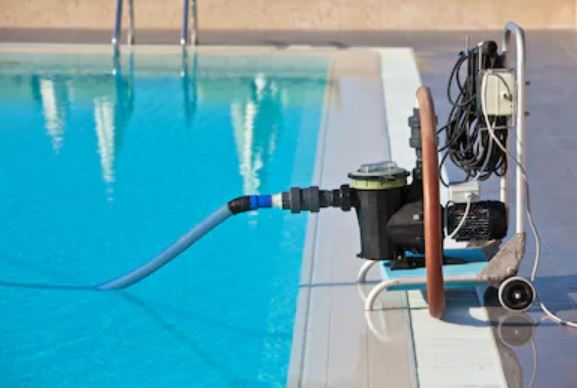
Gas heaters: Gas heaters burn propane or natural gas in a combustion chamber. The generated heat is transferred to water returning to the pool.
Heat pumps: A heat pump uses a compressor and a refrigerant to transfer heat from ambient air to the water. As air passes over the evaporator, the refrigerant warms up. It’s further heated by a compressor and turns to gas. The gas goes to the heat exchanger, which transfers heat to the pool water. The gas cools into a liquid again, and the cycle restarts.
Solar heater: A solar pool heater consists of a long coiled black tube. As water travels through the tube, the sun heats it. Some solar heaters have a clear cover to maximize heat capture.
Electric heater: An electric heater uses a material with high resistance to generate heat. As current passes through it, it gets hot. This heat is transferred to water passing through the heater.
Benefits of Pool Heaters
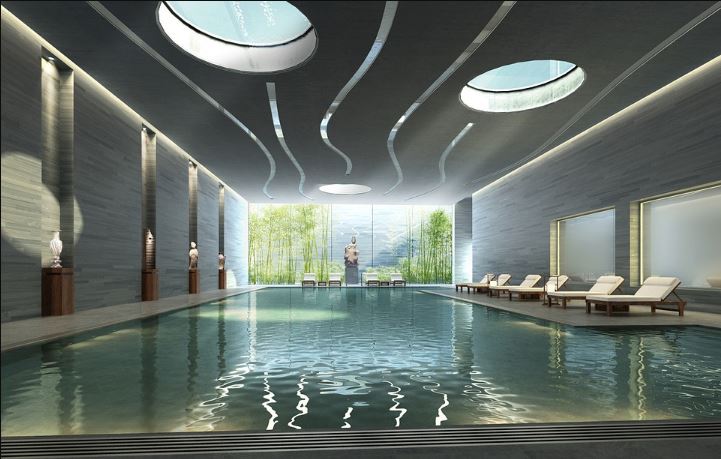
- A longer swimming season. A solar heater can add two months to your swimming season (a month in the beginning and a month in the end). A heat pump can extend your swimming even longer, given the temperature doesn’t drop too much. A gas heater allows you to enjoy swimming all year round.
- Night swims. If you enjoy swimming at night or that’s the only time you have to swim, a pool heater will keep the water at a comfortable temperature. Just be sure to use a pool cover to prevent nocturnal heat loss.
- Better exercise. If you use your pool for physical therapy or exercise, warmer water is better for your joints and muscles.
Frequently Asked Questions About Pool Heaters

Can I Install A Pool Heater Myself?
It depends on the type of heater. If it’s a solar heater, sure. But some heat pumps and gas heaters may require calling a pro.
In fact, some manufacturers require professional installation for the warranty to be valid. So even if you can install the heater, check the fine print to make sure you are not voiding the warranty.
Are pool heaters environmentally friendly?
It depends on the type of heater.
Solar heaters do not use electricity and have no emissions, making them the most environmentally friendly pool heaters.
A gas pool heater is on the other end of the spectrum. They produce harmful emissions (even low NOx heaters have some emissions), and they are inefficient.
Heat pumps fall somewhere between the two. They use less energy to heat the pool, and they do not have any emissions.
Are pool heaters noisy?
It varies depending on the type of heater and the brand. But modern pool heaters are generally quiet. You have to be near it to hear any noise.
Will a black tarp heat my pool?
Yes, it will, but not by much. The most it will do is turn your water tepid.
How many solar panels does it take to heat a pool?
It depends on the size of the solar panels and the size of your pool. If you live in a warm area, get solar panels that add up to 50-70% of the pool’s surface area. If you live in a cold area, the total surface area of the panels should match that of the swimming pool.
Can I leave my pool heater on all night?
Most pool experts recommend leaving a gas heater on all night. It’s counterintuitive, but leaving it on saves gas.
That’s because maintaining a warm temperature uses less gas than heating a cold pool in the morning.
Should I get a pool cover?
Yes, you should. A pool cover will reduce your pool heater’s energy consumption. It’ll keep the pool from getting cold at night, meaning the heater doesn’t have to use a lot of power to heat the pool again.
Bottom Line

A pool heater is a significant investment. You must spend time finding the right one for your pool that will give you the best value for your money.
Hopefully, our reviews and buying guide have helped you choose the best pool heater.

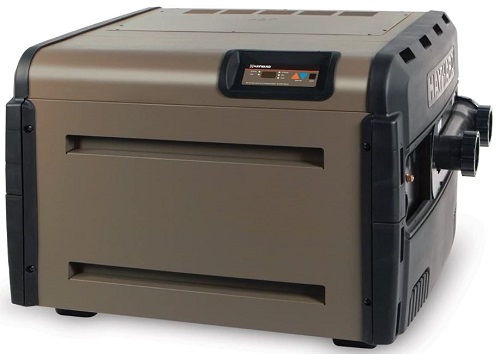
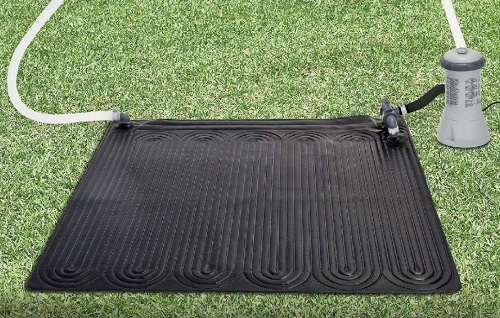
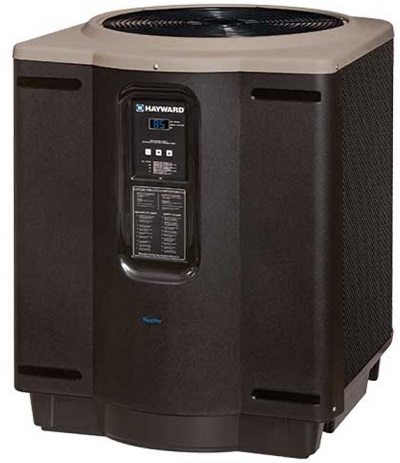
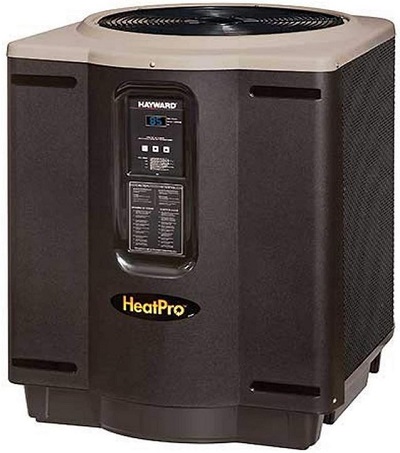
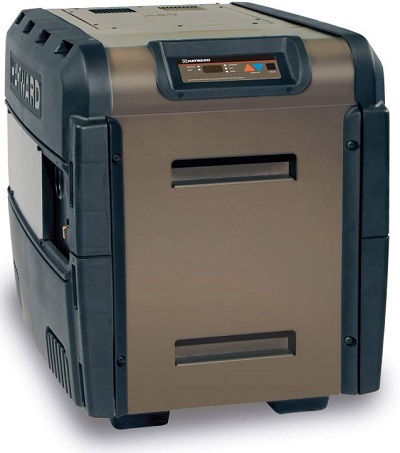
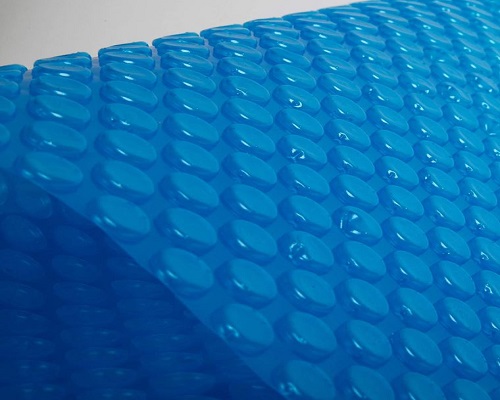
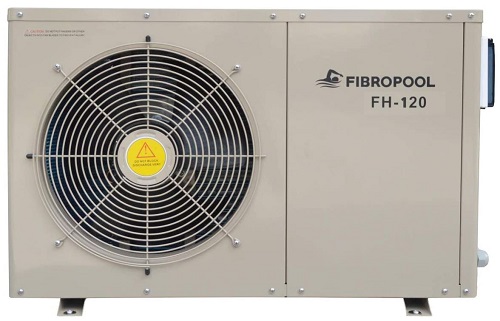
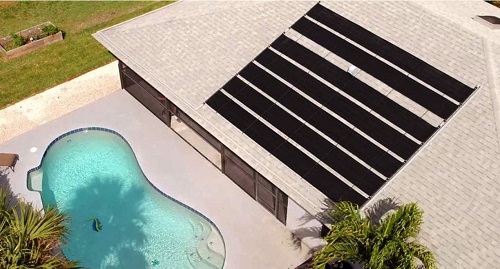
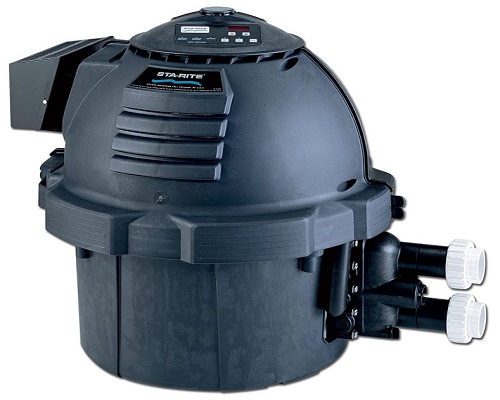
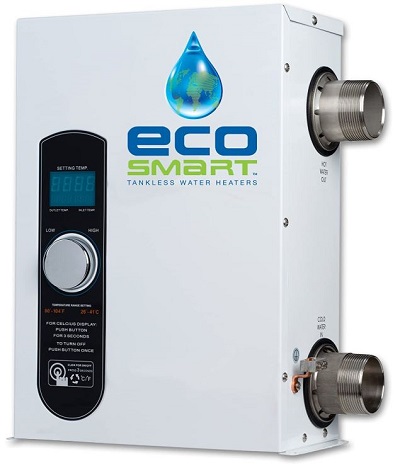
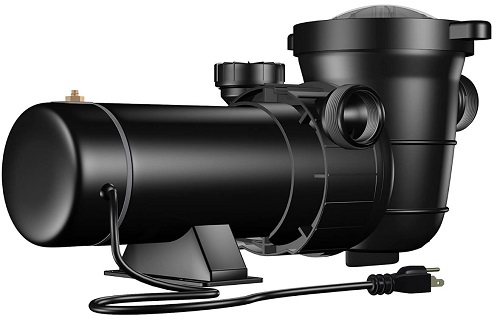
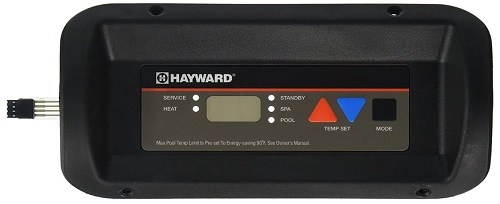
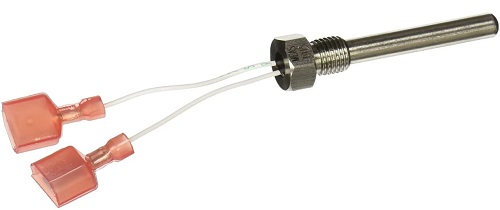
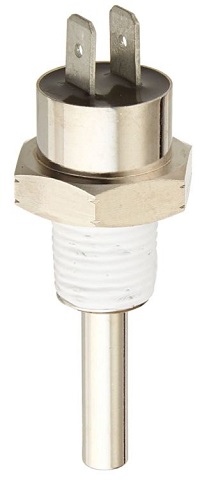
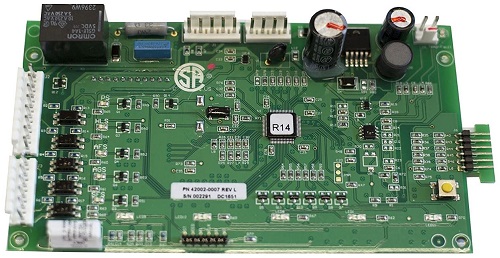
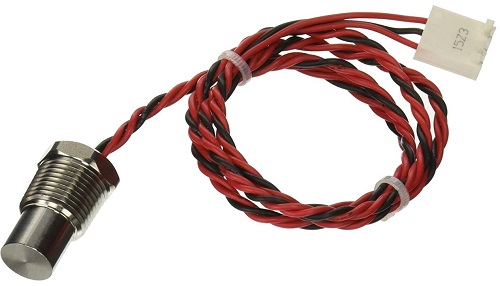
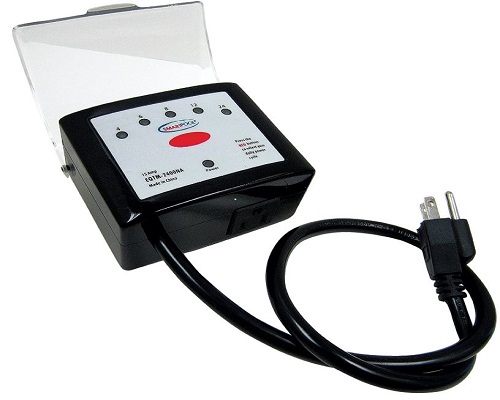
It’s easy for us to indulge in fantasies of hosting weekend parties, adopting an invigorated fitness routine that includes swimming after work and spending hours at the pool, while cultivating the perfect tan.But, in those thoughts, one essential aspect of pool ownership is often forgotten: the maintenance. A lack of proper maintenance could result in the pool becoming uninhabitable. This can result in algae buildup and green water, damaged filters, and even algae buildup. There are ten things you could do to ensure that your pool is in top shape. These suggestions will aid you in getting your season of summer underway regardless of whether you’re a new pool owner or a long-time poolkeeper.
Hey guys,
I’m trying to sell my house fast in Colorado and I was wondering if anyone had any tips or suggestions on how to do it quickly and efficiently? I’ve already tried listing it on some popular real estate websites, but I haven’t had much luck yet.
I’ve heard that staging my home can help it sell faster, but I’m not sure if it’s worth the investment.
Any advice you have would be greatly appreciated.
Thanks in advance!
Thanks, I’ve been looking for this for a long time